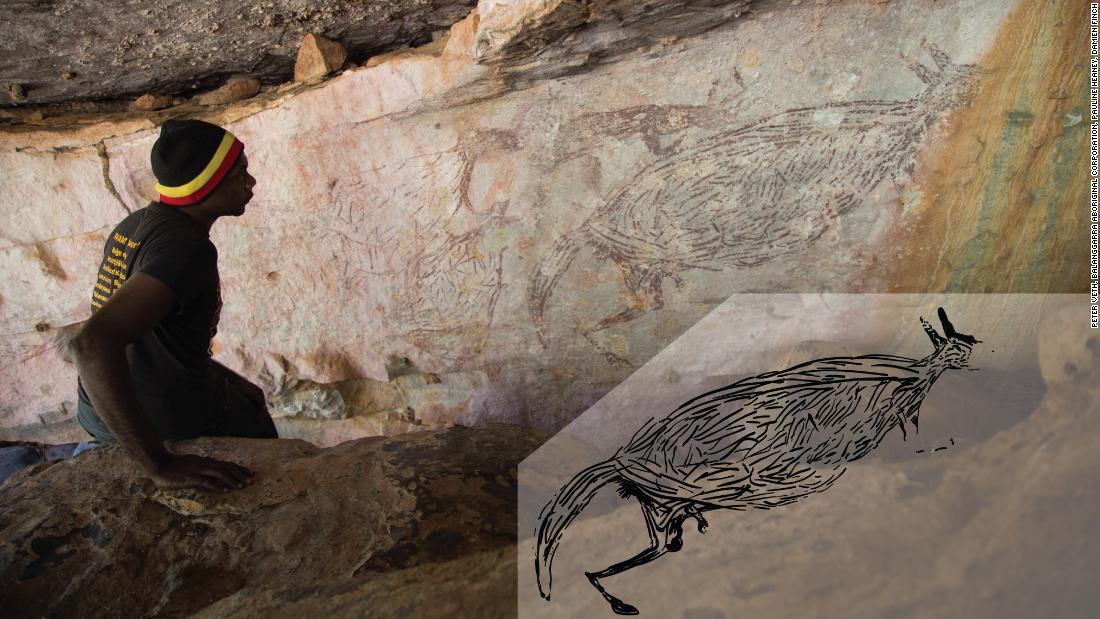The painting of a kangaroo in western Australia is the oldest known rock art in the country, according to scientists, who say that radiocarbon dating analysis shows that it was created more than 17,000 years ago.
The representation of the kangaroo was among a series of rock paintings recorded for the first time by researchers in the 1990s in the Kimberley region, which has one of the world’s largest collections of indigenous rock art. Scientists from several universities and research agencies worked with local indigenous leaders to analyze the paintings, with their findings published Monday in the journal Nature Human Behavior.

A rare representation of a human figure from the oldest painting style by Kimberley. Credit: Pauline Heaney and Damien Finch
They found the remains of 27 mud wasp nests – which can be dated by radiocarbon – above and below 16 different cave paintings, according to the newspaper.
The strategy is simple: if the nests are built on rock art, the art must be older. If art is built on top of nests, they must be older. Dating these nests, therefore, gives scientists a minimum and maximum age for cave paintings.
Old nests also often contain plant material or insect fragments that parental wasps collect for larvae to feed on, all containing carbon.

A painting of a snake on a stone shelter wall in Kimberley, with many other paintings painted on it. Credit: Pauline Heaney and Damien Finch
In dating wasp nests, the authors of this study established that most paintings were produced between 17,000 and 13,000 years ago. Some of the oldest paintings include the image of a boomerang and a rare representation of a human figure reclining on his back. Others portrayed animals, including a snake, a lizard-like figure and three macropods – the family of marsupials that includes kangaroos, wallabies and quokkas.
The kangaroo painting was dated between 17,100 and 17,500 years ago. It was painted on the sloping roof of a rock shelter, home to thousands of fossilized mud wasp nests.
“Many other dates from that period are needed before the full chronological extent of the paintings still visible today can be determined,” wrote the researchers.
